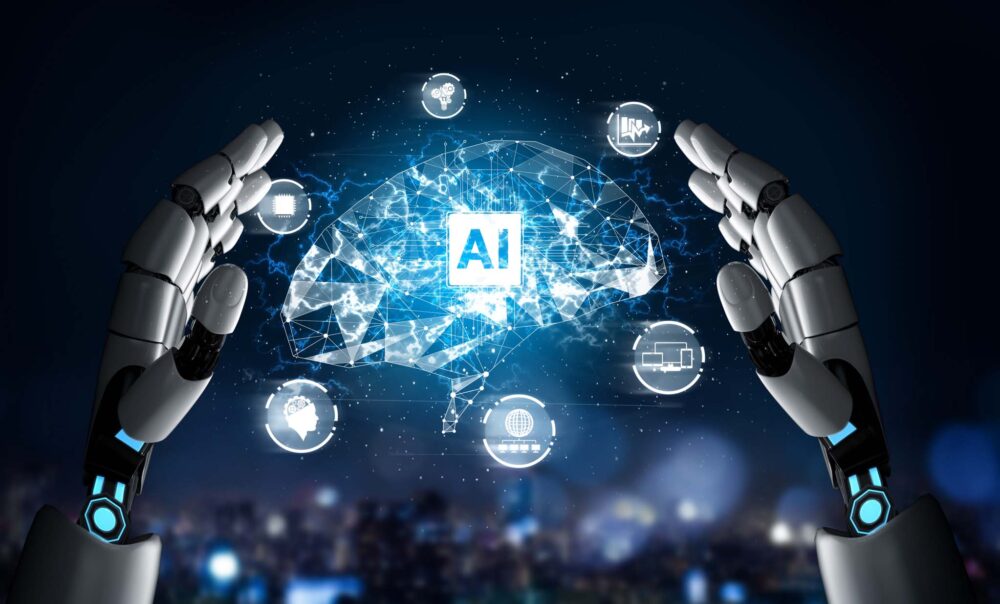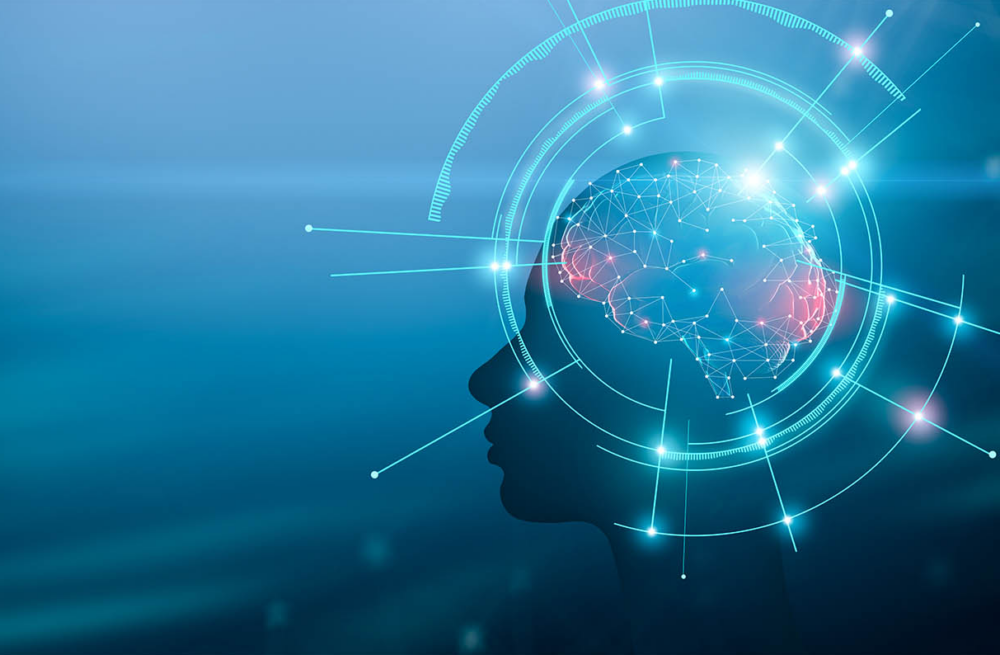When people hear about AI, their first association, inspired by science fiction films, is a smart machine capable of thinking and acting like a human. But the reality is far from fiction, and most people do not notice where AI invades their lives. The same applies to cloud technologies.
Unless some advanced users will give an example of smart assistants Alexa or Siri. But at this stage, the possibilities of convergence of the cloud and artificial intelligence are not limited. What benefits does the union of the most trending technologies have in 2024, according to Gartner?
Understanding the Connection between AI and the Cloud
The cloud allowed users to store information, skillfully manage the power of data centers, and create virtual workplaces. It allows them to organize a common space for different people, where it is easy to share files and edit documents, like in Google Drive. Thanks to the cloud, the application is also synchronized, to which the user logs in from different devices, as in Slack, Dropbox, and Gmail.
The AI’s work also remains invisible. Netflix users do not think about where the recommended movie selections appear in the application or how Spotify “guesses” the listener’s favorite tracks. People see the results of the intelligent algorithm but do not guess where the AI is involved. A smart algorithm analyzes data and behaviors, which become a powerful basis for the development of cloud platforms.
The alliance of the cloud and AI has made it possible to create personal assistants (Siri, Alexa) that perform human voice commands: from listening to music to ordering goods online. The cloud accumulates data for AI training. Only the cloud offers sufficient computing power and the ability to process data sets simultaneously.
Tom Davenport, President’s Distinguished Professor of IT & Management at Babson College, emphasizes the importance of the cloud for AI: “The cloud has turned out to be an amazing distribution mechanism for algorithms – all three of the leading cloud providers have made available of a set of algorithms that make AI much easier to do”. Artificial intelligence, in turn, structures the received data and enriches the cloud with analytical information.
How AI and the Cloud work together: Real-life Examples

Source: learningcomputer.com
Leading enterprises collaborate with cloud app developers to maximize the use of AI and cloud alliance for business purposes. You are probably familiar with the results of such labor – AI-based cloud platforms. Here are some of the apps present on the market:
- IVR solutions. AI-based cloud telephony technology that advises clients, replacing a call center specialist. The IVR app records voice responses to prepared questions. The platform is integrated with computer telephony, so if a complex request arrives, the call is automatically transferred to the agent. The call center employee continues the conversation based on the information about the subscriber shown on the display. An example of an IVR is a customer’s call to the cinema to clarify the schedule for showing films. The smart algorithm of the IVR platform accesses the database and provides the caller with a list of scheduled sessions.
- Chatbots. Without the symbiosis of the cloud and artificial intelligence (in particular, natural language processing technology), it would be difficult to create chatbots. Virtual assistants are located in the cloud and maintain a dialogue with the client in a chat, answering common questions. Chatbots collect user data in the cloud, and cloud services connect them to the appropriate applications for further processing. Thus, the virtual assistant saves customers time searching for answers, gives instant results, and simultaneously collects valuable information for the business.
- IoT platforms. The infrastructure of IoT devices would be impossible without cloud services and artificial intelligence. These technologies support the rapid deployment of services, ubiquitous availability of devices, and IoT applications. An example of using the union of AI and cloud computing is a smart accident prevention system. Connected surveillance cameras transmit photos taken during trips to the edge cloud. A smart algorithm analyzes the frames and sends an alert to the driver about a possible accident. The information is fed into the central cloud to inform the nearest connected cars about a traffic accident. IoT platforms play a crucial role in the seamless integration of artificial intelligence and cloud computing. These platforms enable the rapid deployment of services and the widespread availability of IoT devices. An illustrative example is a smart accident prevention system where connected surveillance cameras utilize AI algorithms in the cloud to analyze captured frames, sending timely alerts to drivers and centralizing information for enhanced traffic management.
- BA Platforms. Business intelligence software helps enterprises collect, analyze and visualize data that is important for the organization’s development. To concentrate information about the market, target audience, and competitors in one place, firms use about 400 sources. The cloud again facilitates the accumulation, storage, and data transfer. AI processes the received information using predictive analytics models. Using BA platforms, firms increase sales, perform operations more efficiently and speed up decision-making.
- Cloud RPA. Cloud automation of business processes takes place in cloud software based on RPA and AI. RPA in the cloud reduces setup time, infrastructure, and maintenance costs. It guarantees better security and privacy than local automation. Cloud-based RPA ensures team productivity growth because robots make fewer mistakes than humans. In addition, organizations save money by automating some tasks by an average of 22%.
What is the mutual benefit of AI and the Cloud?

Source: investopedia.com
Cloud and AI are technologies that are successfully developing in isolation from each other. The cloud market, for example, will double in comparison with 2021 and will amount to $947 billion by 2026. The AI market in the same period (from 2022 to 2027) will increase 5 times, amounting to $ 407 billion. The union of two technological trends gives an amazing result, providing businesses with the following advantages:
The ability to create products based on a flexible development methodology
Cloud application development in our time has become the basis of digital transformation. To deliver software to the market faster, scale seamlessly, and develop the product at the request of users, organizations use a flexible methodology. Agile has become unique in many ways thanks to the integration of artificial intelligence and the cloud.
Thanks to these technologies, agile development provides customers with fast but stable results. AI in Agile is used to work with a large data set (AIOps), obtain business intelligence, and create AI platforms. The cloud gives flexible teams an unlimited number of test and intermediate servers, supports continuous integration and delivery (CI/CD), facilitates code merging, and gives access to development platforms and external services.
It is reasonable to use data, despite exponential growth
The cloud provides the AI platform with constant access to incoming data. Due to the continuous flow of information, the system learns itself and performs tasks better. With traditional, physical data centers, it would be difficult to achieve continuous AI learning.
We would have to update the server equipment and configure, maintain, and protect the information. In the cloud, these issues are solved by the provider, and for scaling it is enough to buy more storage space.
AI processes huge amounts of data while the cloud delivers and protects it. This process structures the information, “filters” it for different needs, and provides the business with a database ready for analytics. Using statistics, organizations can innovate and improve customer service. With AI and the cloud, managing data and controlling the flow of information is easier and more efficient.
Set up intelligent automation based on AI

Source: cigen.com.au
The cloud becomes the base for setting up and maintaining intelligent task automation.
When the AI analyzes data in the cloud, the algorithm finds patterns in some sets. It gives recommendations on what decision to make, taking into account the real needs of the operation. IPA replaces a person where, for example, it is necessary to extract information from documents and transfer it to CRM. Or when one needs to collect information about customers from different sources: phone calls, emails, or online chats. McKinsey estimates that transferring 50-70% of tasks to an IPA leads to savings of 20-35%.
Optimize infrastructure costs
The alliance of AI and cloud computing for business means significant savings on infrastructure costs. The traditional infrastructure consists of computers, servers, data centers, routers, switches, and software. It is difficult and costly to maintain, update and scale such an infrastructure.
If you move the infrastructure to the cloud, the problems and maintenance pains will go to the cloud provider. The business remains to pay money for the capacity used and continue to do business. You can access the data from any device connected to the Internet.
The business buys only the storage that is needed. AI helps to manage the cloud intelligently, create cloud SaaS applications and monitor security bottlenecks in the cloud infrastructure.
Conclusion

Source: vertical-leap.uk
AI and the cloud work together perfectly, fully unlocking each other’s potential. Cloud company such as Andersen provides a reliable infrastructure for AI that processes huge amounts of data necessary for training a smart algorithm and processing information. AI automates data management and organizes rational storage management and security of cloud infrastructure.
The union of these technologies gives businesses greater efficiency, productivity, and digital security. These are exactly the business qualities that are so necessary for competition in the digital world.




